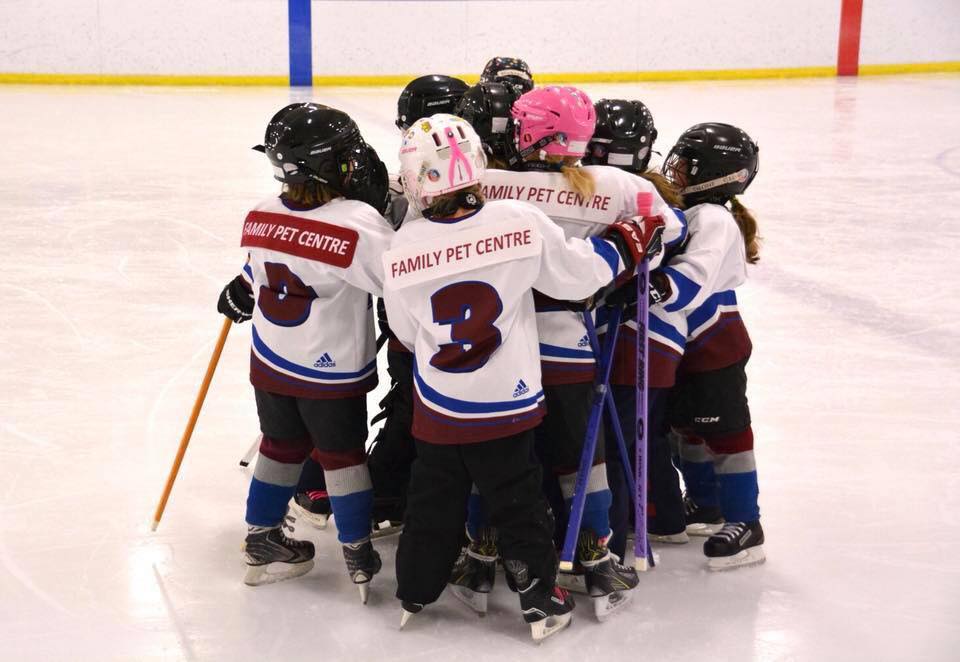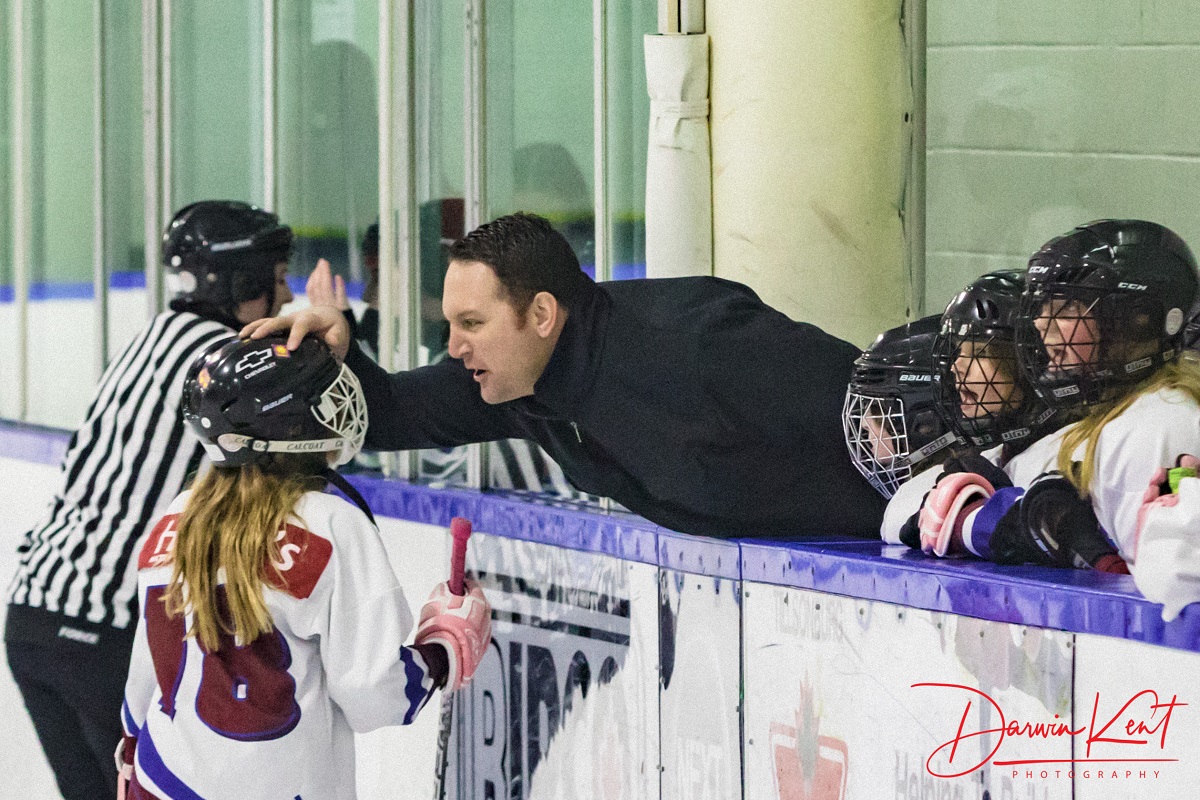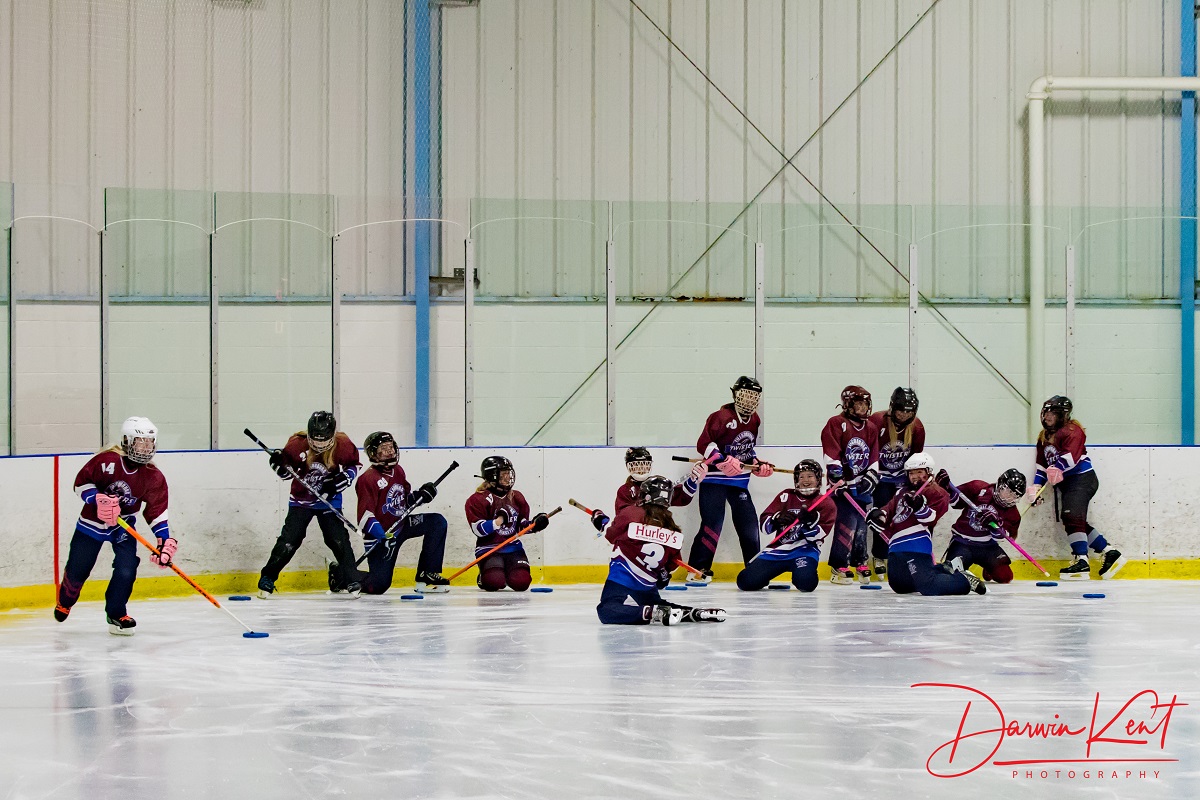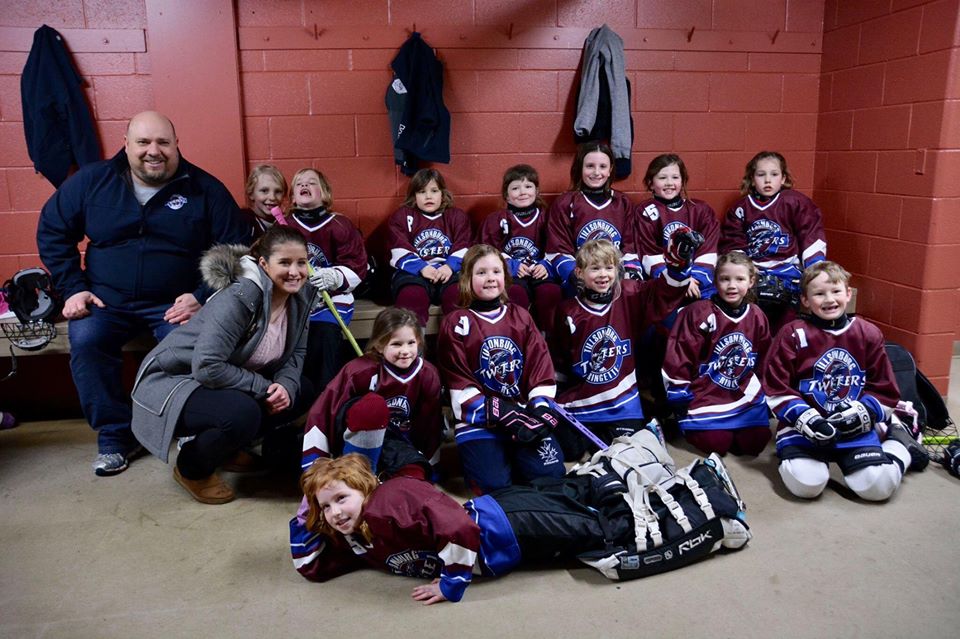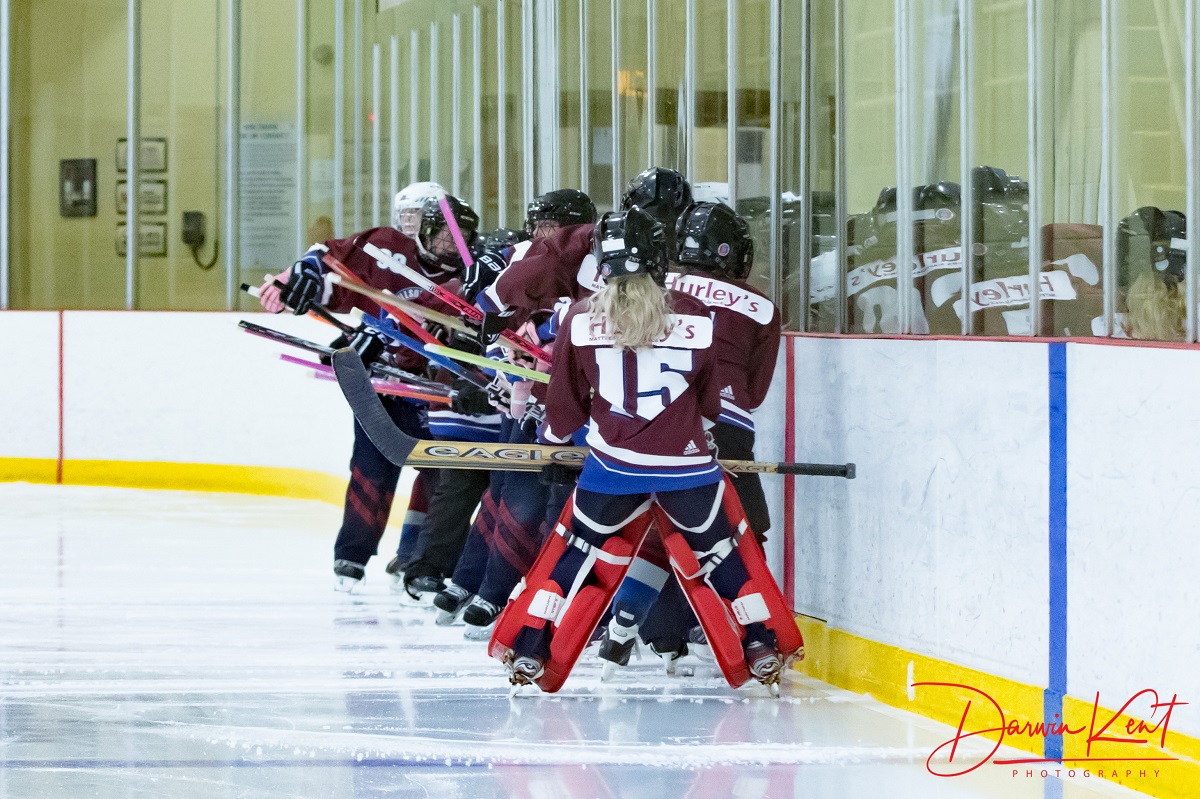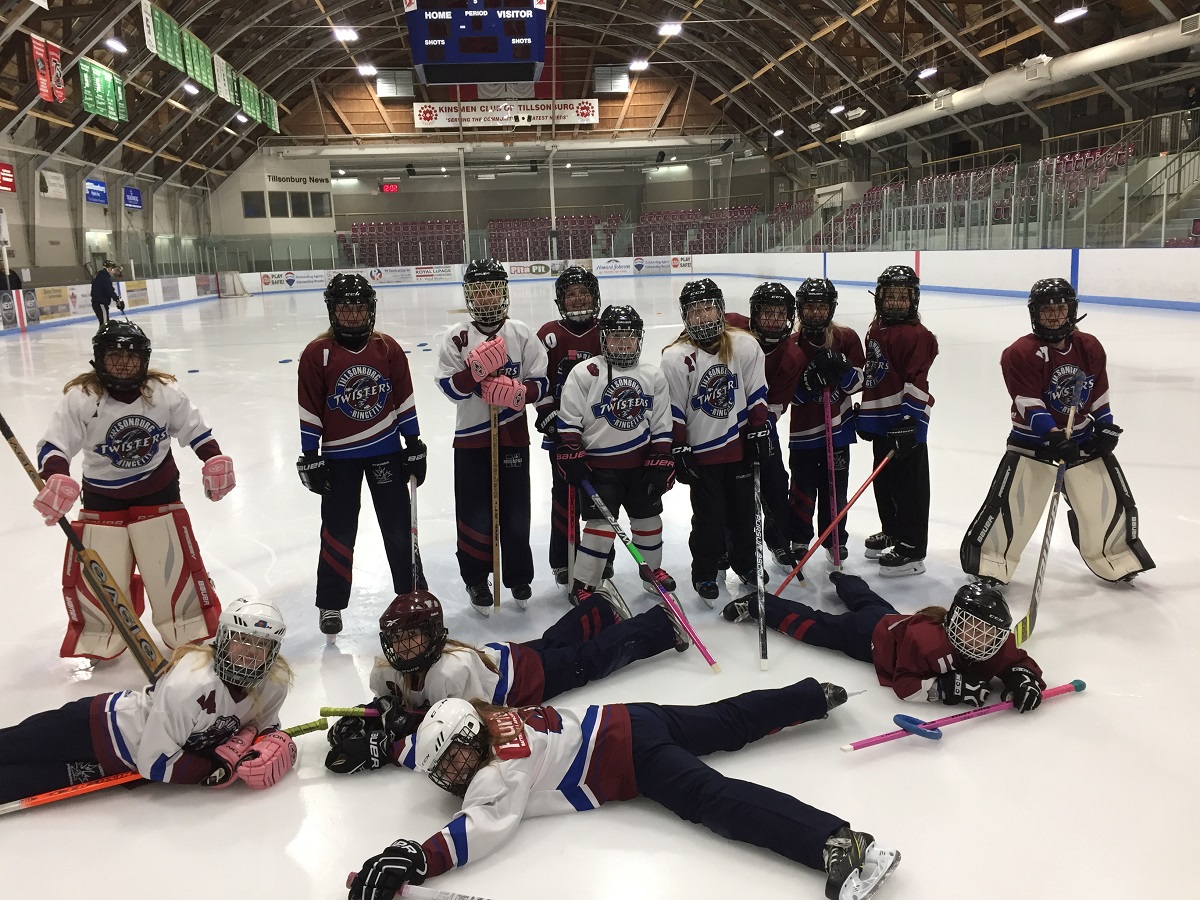A Brief History of Ringette In Tillsonburg
Ringette is a Canadian sport that was invented in 1963 in North Bay, Ontario by the late Sam Jacks. There are currently over 27,000 players on nearly 2,000 teams across Canada with over 2,400 officials and 5,000 coaches. Internationally, it is played in half a dozen other countries around the world. Ringette has been designated a Heritage Sport by Sport Canada and as part of the Sport for Life movement, ringette is well advanced at adapting Sport Canada's Long Term Athlete Development model. For more information, please refer to the Ringette Canada Web site at www.ringette.ca.
Ringette, like hockey, is played on ice with skates and sticks. Each team consists of six players - two defenders, one center, two forwards, and a goalie - with an objective to score goals. But the resemblance to hockey ends here.
The stick is straight. The object being pursued by players is a rubber ring, not a puck. There is no intentional body contact. There are two 20-minute (15-minute for younger divisions) periods. And the rules of ringette make it a wide-open and dynamic sport.
The emphasis is on play-making and skating skills. Players cannot carry the ring across the blue lines on the ice. Only three players from each team, plus the defending goalie, are allowed in the end zones at the same time, which keeps the play open, puts a premium on sharp offensive moves, and requires defending players to skate close to their opponents. These features of the game demand the development of keen skating skills that give ringette players fantastic skating speed and agility.
THE GAME
• Ringette is a fast paced, non-contact ice sport combining speed and strategy
• It is played on a standard rink
• Five skaters and one goaltender are allowed on the ice at one time
• A free pass (similar to the start of a soccer game) is used to start play
• Any stoppage in play results in a free pass to re-start the game, usually in the nearest free pass circle
• The ring must be passed over each blue line to another player, which means all players are involved in the play
• If the ring lands in or on the goal crease the only player who can touch it is the goalie
• Neither team is allowed to enter the goal crease, not even by just their stick itself
• Teams are allowed no more than 3 skaters inside the Free Play Line, so over-crowding is minimal
Image courtesy of BC Ringette Association (provided by Ringette Canada's Webpage)
EQUIPMENT
• CSA approved helmet with CSA approved facemask Type 5 or 6
• BNQ neck protector
• Elbow pads
• Protective gloves
• Hockey style skates
• Shin guards
• Girdle with hip/tailbone/genital protection
• Goalies must also wear a chest protector and goal pads (trappers and blockers are optional)
• Shoulder pads for U19 and under. Strongly recommended for all players.
Ringette Canada has compiled a list of compatible helmets and facemask combinations.
DIVISIONS
* Child's age as of Dec 31st of the start of the season. The player's division is the division that is the lowest division age approperiate.
U8 (Bunnies) Under age 8
U9 (Minor Novice) Under age 9
U10 (Novice) Under age 10
U12 (Petite) Under age 12
U14 (Tween) Under age 14
U16 (Junior) Under age 16
U19 (Belle) Under age 19
18+ (Belle/Open) 18 and Over
CANADA RINGETTE - OUR OLYMPIC DREAM
The dream of participating in the Olympic Games is shared by every ringette player, past or present, in Canada or anywhere else in the world. The questions of how comes often, and here is a summary of what steps we need to take to become part of the Olympic Games:
• Increase our international participation. In order to be a part of the Winter Olympic Games ringette will have to have 25 countries participating in the sport, from 3 continents. This requirement is part of the International Olympic Charter is therefore unlikely to change. That means it is up to us and our partners with the International Ringette Federation to continue to spread the game around the world.Have a competitive World Championship. The International Olympic Committee likes events where they don’t already know who will win. This means that it is not enough for us to spread the game to other countries. We have to teach them to not only play against us, but to beat us!
• Show Pride in Our Sport. It is important to realize that being in the Olympic Games will not make ringette a great sport. We will be a great sport whether we are in the Games or not. Cricket is a sport played by nearly a billion people around the world, with a World Cup final watched on television by nearly half the planet, but Cricket is not part of the Olympic Games. Likewise our sport is a great game, enjoyed by thousands around the world and that will not change with our without the Olympic Games! If we grow our sport because we love it, we are more likely to get the attention of the Olympic movement than if we try to specifically address their concerns and criteria.
• Think Long Term. Our participation in the Olympic Games will take a long time to come to fruition. In the meantime we have to continue to grow and develop our sport, knowing that every step we take in improving our game is a step closer to the goal of Olympic participation
HISTORY
• 1963 Sam Jacks of North Bay, Ontario creates the game of Ringette so that girls in his community would have a team sport to play during the winter months.
• 1964 First complete set of rules for Ringette are composed. Ringette introduced to Quebec.
• 1966 First community associations formed in Sudbury and North Bay.
• 1967 Ringette introduced to province of Manitoba.
• 1969 Ontario Ringette Association formed.
• 1971 First invitational Ringette Tournament held (Oshawa, Ontario Ringette Association).
• 1972 Manitoba Ringette Association formed.
• 1973 Quebec Ringette Association formed Ringette introduced to British Columbia.
• 1974 Ringette Canada formed. Ringette is introduced to Alberta. Nova Scotia Ringette Association formed. British Columbia Ringette Association formed.
• 1975 First regional & provincial championships held in Ontario.
• 1976 Alberta Ringette Association formed. Saskatchewan Ringette Association formed.
• 1977 First Provincial Ringette Summer Sports Camp held in Toronto.
• 1978 First National Ringette Rulebook.
• 1979 First Canadian Ringette Team travels to Finland First Canadian Ringette Championships held in Winnipeg., Manitoba.
• 1980 Second Canadian Ringette Championships held in Waterloo, Ontario.
• 1981 Third Canadian Ringette Championships held in Sudbury, Ontario. New Brunswick Ringette Association formed.
• 1982 Newfoundland Ringette Association formed. Fourth Canadian Ringette Championships held in Dartmouth, Nova Scotia.
• 1983 Fifth Canadian Ringette Championships held in Sherwood Park, Alberta.
• 1984 Sixth Canadian Ringette Championships held in Port Coquitlam, British Columbia.
• 1985 Ringette Canada representatives travel to the Soviet Union, Finland and Sweden to promote Ringette. Ringette is introduced in Japan. Ringette Canada breaks 20,000 barrier in player registrations. Prince Edward Island Ringette Association formed.
• 1986 International Ringette Federation formed. Northwest Territories Ringette Association formed. First Finnair International Ringette Tournament is held in Finland. Ringette is introduced to Australia & New Zealand.
• 1987 Canadian player registration tops 27,000 level.
• 1988 Ringette Canada announced it has inducted Sam Jack and Mirl McCarthy of Ontario to its Hall of Fame (founder category).
• 1989 Ringette Canada announced it has inducted June Tiessen of Ontario to its Hall of Fame (builder category).
• 1990 The first ever World Ringette Championships are held in Gloucester Ontario. Team Alberta win gold and new Sam Jacks Trophy, Team Ontario wins silver and Team Quebec wins bronze. Ringette Canada announced it has inducted Bruce Kettles of Ontario to its Hall of Fame (builder category).
• 1991 Ringette becomes part of the Canada Winter Games.
• 1992 Second World Championships held in Helsinki, Finland. Russia, United States, Sweden, France, Finland and two teams from Canada participate. Canada West wins gold, Canada East wins silver, Finland wins bronze.
• 1993 Canadian Ringette Championships held in Kitchener, Ontario.
• 1994 Third World Championships held in St-Paul, Minnesota. Finland wins gold, Canada East wins silver, Canada West wins bronze.
• 1996 Fourth World Championships held in Stockholm, Sweden. Canada wins gold, Finland wins silver, USA wins bronze. Ringette Canada announced it has inducted Agnes Jacks of Ontario to its Hall of Fame (builder category).
• 1998 First-ever truly national Ringette team travels to Europe to participate in International Summit Series against Finland.
• 2000 Fifth World Championships held in Helsinki, Finland. Finland wins gold, Canada wins silver, USA wins bronze.
• 2002 Sixth World Championships held in Edmonton, Alberta. Canada wins gold, Finland wins silver, USA wins bronze. Ringette Canada announced it has inducted Ottawa's Doug MacQuarrie (official category) and Lyndsay Wheelans (coach category) to its Hall of Fame.
• 2003 Ringette Canada annouced it has inducted Ontario's Jan Larkworthy to its Hall of Fame (official category).
• 2004 Seventh World Championships held in Stockholm, Sweden. Finland wins gold, Canada wins silver, USA wins bronze.
• 2007 Eight World Championships held Ottawa, Ontario. Finland wins gold, Canada wins silver, sweden wins bronze. Ringette Canada announced it has inducted Ottawa's the late Marge (Marjorie) Knowles to its Hall of Fame(builder category).
• 2009 New Division names - Novice is now U10, Petite is now U12,etc. and a new division called U9 (Bunny Mjr/Novice). Ringette Canada announced it has inducted Ottawa’s Joanne Dearden to its Hall of Fame (builder category).
